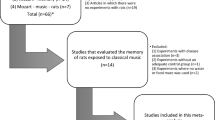Abstract
The tuberomammillary nucleus (TM) located in the posterior part of the hypothalamus is the main source of neuronal histamine in the central nervous system. Recent work from our laboratories has indicated an involvement of the TM region in neuronal plasticity and reinforcement processes. In the present study, we investigated the effects of TM lesions on the performance of adult and aged Wistar rats in a set of learning tasks, which differed in terms of complexity and reward contingencies (habituation learning, inhibitory avoidance, discrimination learning, Morris water maze). An improvement was found in every test applied, indicating that TM lesions seem to generally enhance learning and memory capacities independent of the special demands of a given task. Age-related learning deficits were strongly diminished. Immunohistochemistry revealed that the excitotoxic lesions used to destroy the TM region led to a marked decrease in the number of histamine-positive neurons in the vicinity of the injection site, indicating an involvement of the brain histaminergic system in the observed behavioral changes.
Similar content being viewed by others
Author information
Authors and Affiliations
Additional information
Received: 1 October 1996 / Accepted: 18 August 1997
Rights and permissions
About this article
Cite this article
Frisch, C., Hasenöhrl, R., Haas, H. et al. Facilitation of learning after lesions of the tuberomammillary nucleus region in adult and aged rats. Exp Brain Res 118, 447–456 (1998). https://doi.org/10.1007/s002210050301
Issue Date:
DOI: https://doi.org/10.1007/s002210050301



